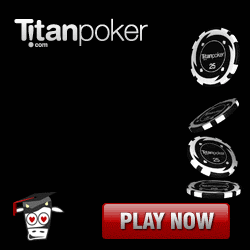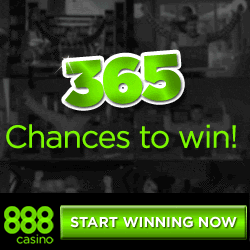To squeeze or not to squeeze?
April 10, 2011, Posted by Pokerfarm

Part 1
A squeeze play is 3-betting where there are one or more callers before you.
The idea is that after an opening raise from MP or LP and a flat call, the "squeezer" 3bets pre-flop and puts pressure on both the other players by representing immense strength. The theory is that the original raiser is probably opening decently wide and the flat caller rarely has a very strong hand, otherwise he/she would have 3bet. This play is generally very profitable when you understand the underlying issues as you make instant profit often and take the initiative to the flop. A squeeze is generally made with a marginal but playable hand or with a relatively junky type hand as the term "squeeze" implies a bluff, but obviously you will generally play your monsters with the same pre-flop line, especially multiway.
Why should you introduce squeezing into your game? Well, the main reason should be to increase your win-rate. Squeezing can be incredibly profitable because if it is used sparingly, you can rep huge strength a lot of the time and unless your opponents are willing to adapt and play a far more high-variance game, difficult to counter. The vast proportion of low and midstakes players know what a squeeze is, but really struggle with dealing with them. The second most important reason for increasing your squeezing frequency is to increase action and widen your squeezing range as you move up through midstakes. If you are known as a player with an exceptionally low squeeze %, then your observant opponents will play super optimally against you, calling when getting great implied with small pps because they know they have good implied (against a range comprised entirely of monsters), getting you to stackoff when they have AA/KK and folding all the very strong hands that they now recognise are crushed by your range (AQs). When you have a wider squeezing range, observant opponents are put in a quandary, sure they know you are squeezing here some of the time, but if they are wrong, it's usually a very expensive as their options in a bigger pot result in a much closer risk:reward ratio.
Introduce squeezing into your game gradually, but bear in mind that position is incredibly important when deciding whether or not to squeeze. Squeezes in position with playable hands (like A5s) will yield a much higher expectation than squeezes out of position that will lead to much trickier spots.
Part 2
There are a few prerequisites to deciding whether or not to squeeze a certain hand in a certain spot. Understanding the players involved is paramount. Players you want to pick on when squeezing include weaktight players and good TAG's. These players will have little difficulty crediting you with a big hand, as long as you don't go absolutely mental. When the cat is out the bag that you squeeze light against TAG opens, beware, they will adjust and go absolutely nuts. Players that you should be much more hesitant to squeeze (ESPECIALLY OOP) are the bad LAG's that wont fold and will try too much funky shit on you post-flop, the exceptionally loose fish that won't fold pre-flop and won't recognise your perceived range post-flop and the maniacs.
Squeezing maniacs is an interesting topic, but against this player type over-aggression with marginal hands is normally not the MOST +EV strategy. Against these players, your best bet is to find a real hand. This leads us onto squeeze-worthy hands. What hands should you add to a squeezing range? Well, against a maniac, definitely do NOT squeeze hands like AJs and 99 unless you are prepared to stackoff (against a probable wide range). This is suicide. Against more conventional opponents, position, image, holding and players involved are more important. With a loose aggressive image, flatting the button with 78s after a MP open and CO call might be more +EV than squeezing, especially if the blinds contain a SB fish. You have a hand that plays better multiway, position and a fish in the blinds that will often overcall and go too far with 2nd rate holdings. Given you want to play as many pots as possible against bad players when in position, squeezing is probably a less attractive proposition as you will force the fish out the pot and run the risk off being 4bet off a nice hand that flops strong (because you have squeezed on the button and you have a LAG image which your opponents wont credit). If you had a tight image and were in the BB with the same hand after the same action, a squeeze might be MORE +EV, as you are picking up more dead money and as you are out of position your suited connectors have a much lower value. Additionally, your perceived range is stronger and if the fish decides to call this too, you have position and a nice hand in a bloated pot, so its not the end of the world.
One final point about squeezing, bear in mind stack sizes. Squeezing when there are shortstacks willing to gamble is, again suicide. Always take the time, no matter how many tables you are playing, to check stack sizes of the players involved and still to act before smashing the pot button.
Part 3
Flop play in squeezed pots is interesting, especially as you play better opponents at midstakes. In squeezed pots, you need to realise that there will be a LOT of bluffing going on, as the pot will generally be in excess of 40bb and well worth fighting for. You should definitely spend some time messing about with ranges and equity on pokerstove, because you will have to fight hard but smart against tough opponents in these spots. The first aspect to consider is squeezed flops OOP. If you are OOP, villain will have called a squeeze IP, where his range will be widest for squeezed pots. That's not to say he won't have AA/KK occasionally, but generally, he will have more 88 and KQs type hands than he would do if he was OOP, because good opponents understand their positional advantage. Consider the player type, if a TAG has called a squeeze, his range (provided your image is true-value TAG) will be something like 88+/KQs/AJs and some higher suited connectors like 89s. There will be relatively few broadway holdings. Villain has shown himself willing to call pre, which means he is happy with his hand. If you are going to cbet squeezed pot flops, have a plan for the hand. So lets say you elect to squeeze J10s oop pre, and flop 974 with 1 of your suit. Don't cbet this board unless you are going to shove or crai the turn (assuming stacks deep enough for this). FWIW on this board I think a CRAI is fine but oop in a squeezed pot against a tough TAG opponent, its OK TO CONCEDE (ie check/fold). Cbetting 1 barrel in squeezed pots is a HUGE leak.
In position, you can do a lot of other stuff. Typically I don't mind checking back all top pair weak kicker type hands in 3b pots, as opponents spew really hard when you check back in squeezed pots, making assumptions about your range that are untrue. Like we squeeze A5s ip, flop 89Ass, villain checks, we check it back because if heaven forbid we hit a flush villain will never put us on it, it will be hard to extract value from worse hands in a squeezed pot by betting this board, we are generally way ahead and protection becomes less of an issue with the highest pair with the flush draw covered in pots with a lower pot:stack ratio. The sexy part is that tough/tricky villains will try and rep a load of stuff, think that we rarely/never have AX/flush draws and sometimes spew big time.
Do your homework, some opponents are literally horrible in 3bet pots, and give up really easy. Some have a very low threshold to double barrels in squeezed pots. Your session and opponent reviews should give you a clearer understand of individual opponents nuances.




